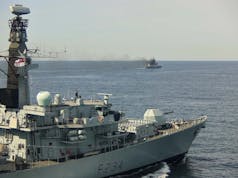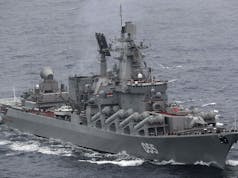BAE Systems has been awarded a contract by the United States Navy to undertake major modernisation work on Arleigh Burke-class guided-missile destroyer USS Lassen.
The contract, valued at $119.2 million, has the potential to reach $137.9 million if all options are exercised.
Under the contract, BAE Systems Jacksonville Ship Repair will conduct a seven-month depot maintenance period (DMP) availability for the ship.
The firm says that the DMP will include underwater hull preservation work, reconditioning of the ship’s engineering spaces, upgrading of command and control equipment, and refurbishment of the crew’s living spaces.
“The modernization work we will perform on the USS Lassen is a major project for our team and industry partners, and builds upon our recent DMP work aboard two other ships,” said Tim Spratto, BAE Systems Jacksonville Ship Repair’s general manager.
“Our work will usher the Lassen into a higher phase of capability in the fleet.”
The company anticipates that the DMP work will commence in January 2023, and will be completed by April 2024. BAE Systems’ Jacksonville shipyard is currently nearing completion of similar work on the USS Winston S. Churchill (DDG 81) and has previously completed a DMP availability on USS Roosevelt (DDG 80).













Ummm…er…how exactly does a nominal seven month DMP translate into a fifteen month timeline? Thought USN was attempting to minimize fleet maintenance downtime?
And how much??, Is she a flight 1 ship?, That’s a lot of money on an ‘ executive refit’, and yes, a long time also
Lassen is an early Flight IIA. This is a pretty standard set up upgrades for Burkes of her age and will bring her up to the standard of the latest Flight IIA TI ships being delivered to the USN now. It’s a lot of time and money, but she will be around for a long time yet. While all Flight I and II Burkes have some sort of BMD capability, there are a lot of Flight IIAs that don’t have BMD capability yet, this is the process they go through to get it. All Flight IIAs since DDG-113 have received Baseline 9 upon completion though.
I still struggle to understand how the US and Russia put ships out for several decades, and the Royal Navy only get 25-30 year’s? What’s the difference (not the actual ship) in why the US and Russia have ships in service much longer? Stupid question I know, just cannot work out why we are any different.
I recall HMS Ocean was notable for being built to commercial standards, which reduced build cost significantly, but resulted in only a (nominally) 20 year hull life. Most warships are built to last much longer, but- as with a car- the cost and frequency of required maintenance increases as the ship ages, and it comes down to a cost-benefit assessment of whether life-extension is worthwhile versus replacement. HMS Hermes was sold to India by the RN after 25 years, but served for nearly 60 years in total. The Russians keep their ships in service for a long time because they can no longer build the kind of major surface platforms that the Soviet Union could.Those ships are generally not in a good state. With the USN I suspect it comes down to the high capital cost of replacing some of these platforms, plus the fact that the ship yards haven’t the capacity to replace them at a sufficient rate to maintain the hull numbers they believe they need, which leaves life extension as the only option.
HMS Hermes was laid down (as HMS Elephant) and launched in 1953. quite a time to say the least
I believe the USS Arleigh Burke is due to decomission in 2026 and be followed by 3 each year afterwards. The hull life is 35 years which isn’t far off the hull life of the T23 Frigates.
You have to remember that because we have a much smaller number of ships and we operate predominantly in the North Atlantic these ships take a lot of hammer.
I’m sure Gun buster can shed some light on this but I think I read somewhere that 1 T23 needed @50% of the hull plating replaced during its refit.
GB please feel free to correct me if I’m wrong but I seem to think it was Somerset or Richmond.
Thanks ABCRodney, I thought it was 35 years but further investigation says it’s 45 years. The end of service for the AB Class was confirmed in 2018 as 45 years.
That’s a great bit of value for money.
Unfortunately not as that bright idea was dropped in the FY2020 plan, so it is 35 again.
https://www.defensenews.com/naval/2020/03/07/destroyers-left-behind-us-navy-cancels-plans-to-extend-service-lives-of-its-workhorse-ddgs/
H ABC Rodney – this is bad news, particularly in Iight of Gunbuster’s post that the Tico cruisers are on their way out this decade. The US navy will be hard pressed to expand their surface warfare assets this decade- which is all to familiar for the Royal Navy .
T 23 origiunally had I think an 18 year life!
Nah that was an american PC I worked on.
However T23 does get a lot of inserts for worn steel. Thats not a big issue every ship commercial or military has inserts put in for worn and corroded out steel. You survey the steel plates with visual and Ultrasonic thickness tests. Usually if its reduced in thickness by 25% from the original it gets replaced.
Ignoring the electronic and weapons the main dockyard work will be hull and tank work.
Blast back to bare. Hull and tank inspection all withing the first 20% of the project timeline. Then the RCC’s start to arrive because you find out the hull needs inserts, Comp Fuel tank pipework is rotten and the sea valves are on the way out.
The sea water isn’t very nice to metal.
Lots of work to keep warships going at sea.
I remember seeing some type 42s and the outside side metal wasn’t smooth. Like paper spread over a metal grid
Photo of HMS Edinburgh
Pic
That happens no matter what. There are a lot more longy and vertical stiffeners in warships than commercial ships and they are a lot closer together to increase resiliance and strength. Thats why you see the squares on hull plates when looking from outside. Most RN hull plate isnt that thick…less than 20mm
Commercial ships hulls are thicker but have less longy and vertical stiffeners.
Here is some bad corrosion on a warship hull and I wont say which nation it belonged to so dont ask! The plate was way less than 50% thickness where the divot at around 8mm. That needed a doubler plate on the inside of the hull welded in as a temp fix until it could be dry docked for a permanent insert to be done.
Some types of maintenance availabilities take longer than others. A DMP is basically a mid-life upgrade and is the most extensive refit a non-nuclear ship gets. Lassen will very likely get the same treatment Winston S. Churchill just got, which in addition to all of the normal maintenance work also got the latest version of AEGIS Baseline 9 (which enables simultaneous air and BMD engagements) and integration of the latest missiles like ESSM Block 2, SM-2 Block IIIC and SM-3 Block IIA. It’s possible she could get a laser as well, but I’m not sure. She’s going from not having a BMD capability at all to getting the most advanced BMD capability the USN currently has. It takes a long time, but it will be worth it.
Keen to understand the plan for the flight 1 ABs? I imagine these will retire as the flight 111 s come non stream .
The Flight Is are getting old, but I think retirements are still several years off. 6 or 7 of the Flight Is (Including the Arleigh Burke herself) have the full Baseline 9 upgrade like the newest ships, but most Flight Is and all of the Flight IIs have older AEGIS Baselines (Baseline 5 I think) and have to switch back and forth between regular air and missile defense or BMD, but can’t do both simultaneously like the Baseline 9 ships can.
A lot of the middle range ships of the Flight IIAs haven’t received any BMD capability yet, but will as time goes by.
Around 2027 some Flight IIAs will start getting the SPY-6(V)4 backfit to replace the SPY-1 radars. This will be a smaller array than the SPY-6(V)1 that the Flight IIIs are getting, but still very advanced.
The Flight IIIs seem to be intended to take over the role of the Ticonderoga class cruisers as they retire.
interesting insights Paul, thanks for the detailed reply.
Flight III will allow the Ticos to go more …and they do need to go. Some of the ones I have been on to repair serious defects are hanging on by a wing and a prayer.
thanks for that GB. That makes good sense . I recall Congress were keen to extend the life span of the “younger” Ticos, but the Navy were naturally opposed to such an idea.
Interesting job you have there GB – working on repairing these ships. I bet you have your handsful! 😀
Its interesting. Every navy has a different way of doing things. Some repairs are straightforward and you think surely the shoip could have fixed that instead of getting us in to do it…others are huge and complex.
Just finished doing a 16Cyl Paxman engine change that took 3 weeks . Lots of checks, tests, alignment, test runs…Thats an interesting one when we do it and we have done a fair few of them.
Fascinating stuff Gunbuster. Sounds like you have a really interesting and rewarding job that you have there!
I am the “The Sun” time traveller reporter and my next prediction is sometime this year
BAE to modernise DDG83 Howard when the current one is finished.
Very confusingly, Howard (DDG 83) already went through the DDG Mod upgrade process and is now forward deployed in Japan… Likewise Preble (DDG 88) just finished the whole process and also has a HELIOS laser to boot, and Pinckney (DDG 91) is getting an upgrade with all the same things (minus the laser) and also the next evolution of the USN’s EW system that will look jarringly different and will change the profile of the ship. So unfortunately the hull numbers and upgrade schedules aren’t in perfect synch. Even the new ships are out of hull number sequence because two different yards are building them and one is on Flight IIIs now while the other yard has fallen behind and still has several Flight IIA TI ships to deliver. Being a Burke spotter is a full time hobby.
BAE Jacksonville only look after the Atlantic fleet, normally just the Mayport fleet. DDG-83 USS Howard is part of the Pacific fleet. My betting would be DDG-87 USS Mason being numercially the next one in the Mayport fleet.
Actually Mason came out of a 14 month maintenance programme in May 21, just before it shifted homeport from Norfolk to Mayport … so my prediction is probably wrong.
Well I’m not really a time traveller and I guessed ddg83 as DDG 80,81 and now 82 have been done in number order. 🙈😂
DDG-75 USS Donald Cook is squeezed in between DDG-81 & DDG-82